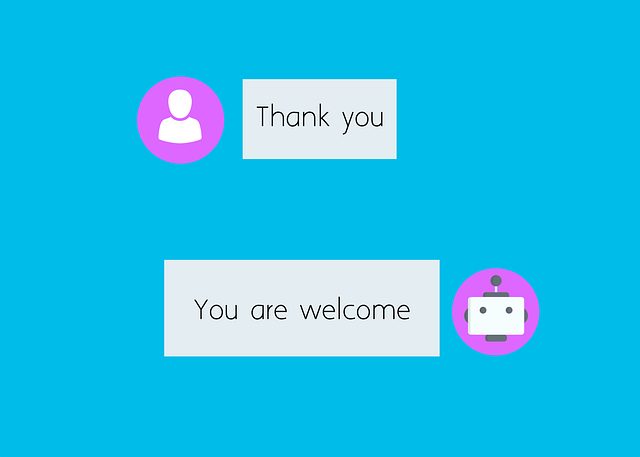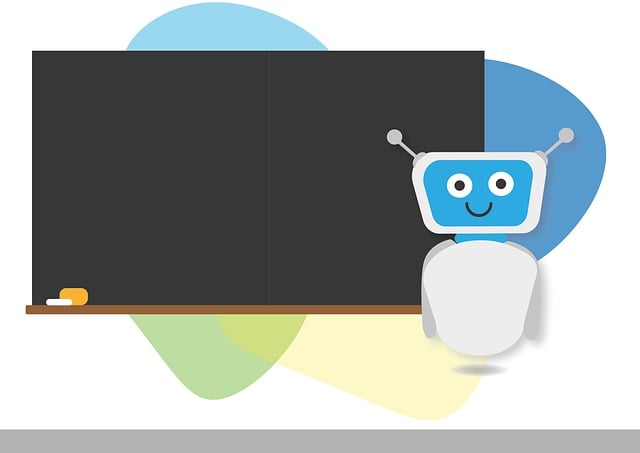Generative AI is revolutionizing chatbot development by enabling machines to generate dynamic, contextually relevant responses, surpassing rule-based systems. Advanced chatbots leverage vast datasets and transformer architectures for training, allowing natural conversations and personalized experiences. Key components like NLP engines, machine learning models, conversation management systems, and data storage facilitate engaging interactions. Post-training, iterative analysis, fine-tuning, and reinforcement learning refine performance. Successful deployment on platforms like websites, apps, or messaging services, integrated with existing systems, ensures seamless user interactions. Regular updates, monitoring, and consideration of trends and feedback enhance chatbot performance and user satisfaction.
Creating your own generative AI chatbot is no longer science fiction; it’s an achievable goal. This comprehensive guide takes you on a journey from understanding the fundamentals of generative AI to building, training, and deploying your own sophisticated chatbot. We break down essential components, architectures, and refining techniques, empowering you to create a chatbot that provides insightful, contextually relevant responses. Get ready to revolutionize customer service and engagement with cutting-edge technology.
- Understanding Generative AI: The Foundation of a Chatbot
- Building Blocks: Components and Architectures for Chatbots
- Training, Refining, and Deploying Your Generative AI Chatbot
Understanding Generative AI: The Foundation of a Chatbot

Generative AI, at its core, is a powerful technology that allows machines to create new content like text, images, or music, often mimicking human-like creativity. When it comes to building a chatbot, understanding this concept is crucial. A Generative AI chatbot goes beyond traditional rule-based systems; instead of providing pre-programmed responses, it generates dynamic and contextually relevant replies. This technology enables the chatbot to engage in natural conversations, offering personalized experiences to users.
The foundation of such a chatbot lies in training models on vast datasets, teaching them to recognize patterns and generate human-like text. These models use advanced algorithms like Transformer architectures and vary in complexity, from simple rule-based systems to intricate deep learning networks. By mastering Generative AI, developers can create chatbots that evolve with user interactions, ensuring a more engaging and intuitive conversational experience for users, thereby enhancing the overall chatbot functionality.
Building Blocks: Components and Architectures for Chatbots

Chatbots are built on a foundation of key components and architectures that enable their functionality. At the core, these systems typically consist of Natural Language Processing (NLP) engines, which interpret user inputs and generate responses. NLP is facilitated by advanced machine learning models, often based on transformer architectures like GPT-3 or BERT, capable of understanding complex language patterns.
The chatbot’s “brain” is its conversation management system, responsible for tracking context, maintaining coherent dialogue, and managing user intents. This layer ensures that the chatbot can handle diverse user queries effectively. Additional components may include data storage for knowledge bases, user profiles, and interaction history, enhancing personalization and contextual understanding. Together, these building blocks form the framework through which a chatbot interacts with users in meaningful and engaging ways.
Training, Refining, and Deploying Your Generative AI Chatbot

After training your generative AI chatbot with a diverse and extensive dataset, the next crucial steps involve refining its performance and deploying it effectively. Refining includes fine-tuning the model to mitigate biases and errors by analyzing its outputs and comparing them against human-generated responses. This iterative process often employs techniques like reinforcement learning and backpropagation to adjust parameters for better accuracy and context understanding.
Once refined, deploy your chatbot on suitable platforms such as websites, mobile apps, or messaging services. Consider integrating it with existing systems and ensuring seamless user interactions. Regular updates and monitoring are essential to keep the chatbot up-to-date with new trends, language nuances, and user feedback, enhancing its overall performance and user satisfaction.
Creating a generative AI chatbot involves understanding the core concepts of Generative AI, selecting the right components and architectures, and meticulously training, refining, and deploying your model. By combining these steps with continuous optimization, you can build an advanced chatbot that enhances user interactions and drives meaningful conversations. Remember, the journey doesn’t end with deployment; it’s a dynamic process that requires ongoing refinement to keep up with evolving user needs and market trends.
